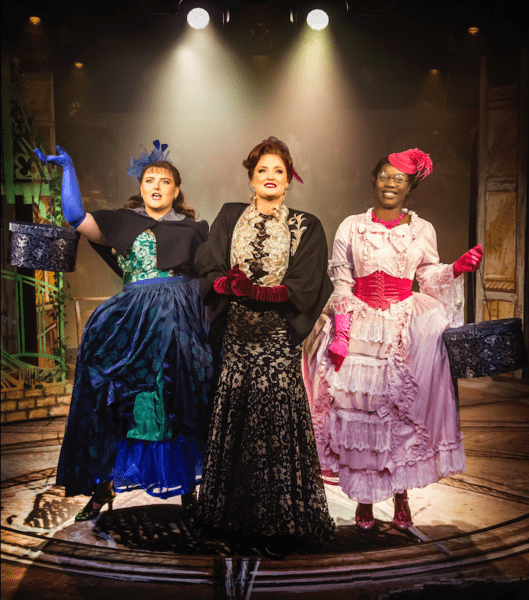90s Baby POP has been touring the UK with Atomic Kitten, Five, Liberty X, Gareth Gates, S Club Allstars, 911, Damage, The 411, Big Brovaz & Booty Luv, and Honeyz. But the Manchester date was the main event, with 10 extra artists on the bill. Sadly, 2 Unlimited and Aqua, the headliner, dropped out last-minute.
I saw 2 Unlimited at a similar event, We Love the 90’s, which was headlined by Vengaboys. Anita Doth is no longer with 2 Unlimited, and her replacement, Kim Vergouwen, left the group this year. The problem with We Love the 90’s is many of its acts were not the original artists; some of them were essentially tribute acts. 90s Baby, however, prides itself on securing top talent from the 90s (save for Livin’ Joy featuring Luzahnn, who they love hiring) – and this line-up was their best yet. Aqua’s departure was felt but nevertheless the night was nostalgic and naughty.
The event was opened with a DJ session from Nick Coulson, before the host, Jonny Meah, took to the stage. He would return in between each act. He was a great host, not too cheesy, and he never made himself the star of the show.
The first of the main acts was Chico, who was given a healthy four-song set, but his penultimate song was the only one anyone cared about: ‘It’s Chico Time’. Whilst few people recognised his other songs, he is a showman and really brought the entertainment (and a little cringe). For a fleeting moment, I forgot he was an antivaxxer.
Chico was followed by another cheesy artist: The Cheeky Girls. This fever dream began with a grating cover of ‘We Go Together’ from Grease before ‘Hooray Hooray (It’s a Cheeky Holiday)’ and their biggest hit, ‘Cheeky Song (Touch My Bum)’. Shout out to their camptastic sparkly outfits.
Things then got a little more tasteful (though less entertaining). Honeyz’ four-song set featured three of their hits, including ‘Finally Found’, and a cover of TLC’s ‘Waterfalls’. They were followed by Big Brovaz and Booty Luv (for those of you who don’t know, Booty Luv is made up of two of the female members of Big Brovaz). After performing Big Brovaz’ ‘Nu Flow’, they sang Booty Luv’s (superior) cover of Tweet’s ‘Boogie 2Nite’ and ended with the former’s ‘Baby Boy’.
Next up was S Club Allstars, which is currently made up of S Club 7‘s Bradley McIntosh aka City Boy (an original member of Allstars) and Tina Barrett, alongside S Club Junior‘s Stacey Franks. They opened their set with S Club 7’s ‘Bring It All Back’, which they followed with S Club Junior’s ‘Automatic High’ and ‘One Step Closer’. They then finished their set with the former band’s biggest hit, ‘Don’t Stop Movin’, and a song that any British party is not complete without: ‘Reach for the Stars’. This set was particularly nostalgic, even though S Club 7’s lead singer, Jo O’Mara, is no longer a part of Allstars (but given her racism scandal, I am glad). Admittedly, I’m more of a Steps fan, myself!
The cheesy nostalgia continued, with Gareth Gates singing his questionable cover of Elvis Presley‘s ‘Suspicious Minds’, his second single, ‘Anyone of Us (Stupid Mistake)’, and his joyous cover of Norman Greenbaum‘s ‘Spirit in the Sky’
The cheese-grating was then brought to a halt, with The 411 giving us RNB and sensual moves. They first sang ‘On My Knees’ then ‘China Girl’ and cleverly ended their set with ‘Dumb’.
More groups followed. 911 showed off their incredible moves with a 6-song set that ended with the crowd-pleasing ‘Bodyshakin”. Damage sang 3 or 4 songs, I don’t quite remember, but I do remember seeing them sing the sexy, soulful ‘Ghetto Romance’.
Liberty X, a fixture of Pride festivals, opened their set with their signature song, ‘Just a Little’, following it up with ‘Thinking It Over’ and finishing it off with ‘Being Nobody’ (their cover of Chaka Khan‘s ‘Ain’t Nobody’).
Las Ketchup then transported us from the cold, wet streets of Manchester to sunny Spain. After singing a song nobody knew, they began speaking, in Spanish – and still, nobody knew what they were saying, but we were thrilled to be in their presence and looked forward to inevitably seeing them singing ‘The Ketchup Song (Aserejé)’.
Las Ketchup had the whole audience doing the iconic dance moves, as did the next act, Whigfield, with the timeless ‘Saturday Night’. I saw Whigfield at We Love the 90’s, and she sang the exact same three songs in the exact same order: ‘Think of You’, ‘Saturday Night’, and ‘Sexy Eyes’. But whilst We Love the 90’s was on a Friday, 90s Baby Pop took place on a Saturday – which made her performance extra exciting.
Next up was one of the acts I was most looking forward to seeing: Corona (aka Olga de Souza). Whilst she did not sing ‘Try Me Out’, she opened her set with ‘Baby Baby’ and ended it with ‘Rhythm of the Night’. In between the two iconic tunes, she sang a little bit of ‘I Will Always Love You’ (a cappella) to thank us for our support. Now, Olga did not actually sing her own songs (she merely lip synced in the music videos) so I don’t know what possessed her to give Whitney a go, but you’ve got to admire her confidence (slash ignorance). Other than that questionable song choice, it was a fun, fierce performance, and she looked fabulous.
Lou Bega had us swaying along to ‘I Got a Girl’ and a newer song but then he sang ‘Mambo No. 5’ – and you can imagine the audience reaction!
Meah then told us that he had been playing one of the next artist’s songs on the other dates, and the audience always went wild – but we were getting it live! The artist in question? B*Witched! They sang ‘Rollercoaster’, ‘Jesse Hold On’, ‘Blame It on the Weatherman’, and, of course ‘C’est La Vie’ – but they mixed it up by including a bit of Ed Sheeran‘s ‘Galway Girl’. With umbrellas and huge balloons that they threw into the audience, this was possibly the best performance of the night.
Next up was England’s answer to B*Witched: Atomic Kitten (well, Liz McClarnon and Natasha Hamilton). They sang their cutesy cover of Blondie‘s ‘The Tide is High’ and ‘Eternal Flame’ before they got the audience ecstatic with ‘Whole Again’.
Meah then killed the vibe by telling us that some of us might have seen the news on social media: Aqua had pulled out. It was wise to leave the news until later on in the show, for it meant we got to enjoy the majority of the show (ignorance is bliss, y’all).
Luckily, Five were their to lift the mood, with a fiery six-song set – with literal fire! They got everybody up on their feet with ‘Everybody Get Up’ and had us all moving with ‘Keep On Movin”.
Meah then told us that there would be a wait whilst they set up for the next act. He joked that Aqua should have called ‘Doctor Jones’ (too soon) and then had the DJ play ‘Barbie Girl’. To my delight, the set that followed included Ricky Martin‘s ‘Livin’ La Vida Loca’. By this point, people had begun leaving so there was plenty of room for me to dance! It then dawned upon me that this is why they saved the bad news until later on in the show: they knew that people would leave.
After the world’s longest set up, Gala took to the stage – for a five-song set that, judging by the audience reaction, was four songs too long. It just seemed to go on forever, and the majority of the audience was not familiar with her music – plus everyone was reeling from the Aqua news.
Gala is a great performer, and the flamenco dancer was a nice touch, but spending so long setting the stage for the band she was allowed to bring and then letting her sing five songs, four of which most people did not know, was not a wise decision.
Admittedly, ‘Freed from Desire’ had everyone buzzing, but then she sang another song – one which she even told us we do not know. It killed the vibe, after ‘Freed from Desire’ saved her performance. Finally, after a fifth and final song, we were freed from Gala…
The DJ then played Oasis‘ ‘Wonderwall’, a bid to get the Manchester audience back on their side – but it was Heather Small that saved the day. She sang three M People songs – ‘Search for the Hero’, ‘What Have You Done Today’, and ‘Moving on Up’ – but she should have been allowed to sing more. I wish she’d sang ‘Sight for Sore Eyes’. Why did Gala get to sing 5 songs but Small only 3?
Los del Río, aka The Del Rios, followed, with two Spanish songs we did not know, the second a fun salsa song. They then performed the song that made them a one-hit wonder, ‘Macarena’ – and, in turn, were responsible for the biggest Macarena in history!
Whilst Eiffel 65 were supposed to be the penultimate act, Aqua’s departure left them with the main spot. The audience waited patiently as they sang ‘Too Much of Heaven’ and ‘Move Your Body’. Then, finally, they performed ‘Blue (Da Ba Dee)’ – a riotous end to a rave-tastic night (well, day and night).
Then, everybody left.
90s Baby POP did not manage to recover from the sad news of Aqua’s departure but it was still a fun, naughty night of nostalgia – and most of the remaining acts were fantastic.
































